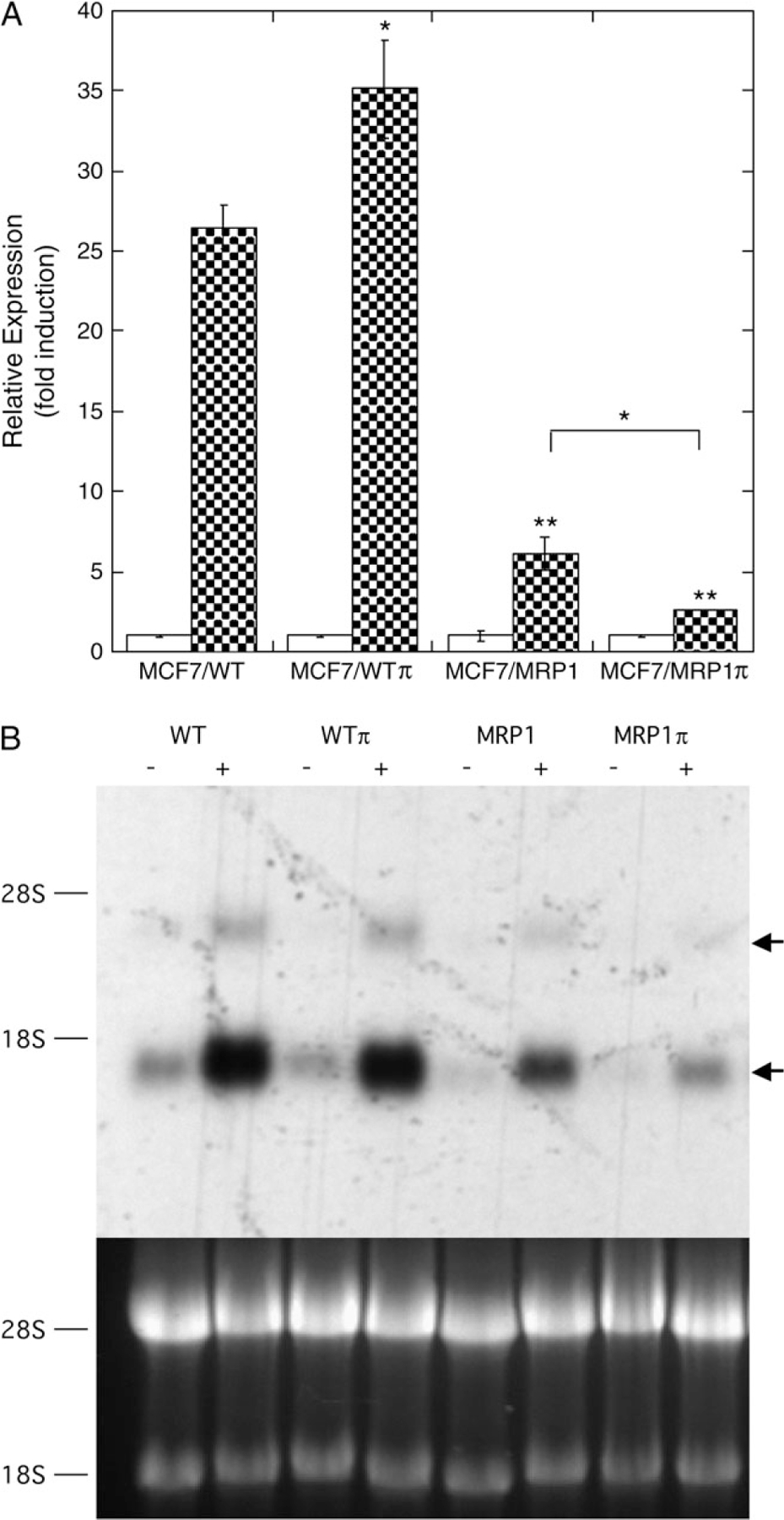Fig. 4.

Effect of MRP1 and GSTP1–1 on SFN-mediated induction of ARE-containing gene expression. (A) Reporter gene expression. Indicated cell lines were cotransfected with the ARE-containing firefly luciferase reporter gene (0.5 μg pARE-TI-LUC) and control CMV-Renilla luciferase reporter gene (5 pg pGL4.75) as described in Materials and Methods. Twenty-four hours later, cells were treated with 25 μM SFN (closed bars) or vehicle control (open bars) for 3 h, medium was replaced with SFN-free medium and cells were processed for luciferase assays 21 h later. Renilla luciferase activity was used to correct ARE-driven reporter gene activity for differences in transfection efficiency. Data so corrected was normalized to control (−SFN) activity and expressed as relative expression (fold induction). Each bar represents the mean values ±1 SD of three to six independent transfections. Statistical significance of differences between the induced values (+SFN, closed bars) of parental (MCF7/WT) and the transgenic (MCF7/WTπ, MCF7/MRP1, and MCF7/MRP1π) cells (asterisks directly above bars) and differences between MCF7/MRP1 and MCF7/MRP1π cells (asterisk above bracket) were determined by the Student’s t-test: *P < 0.03, **P < 0.001. (B) Endogenous gene expression. Shown are a representative northern blot, probed for NQO1 expression, of total cellular RNA derived from the four cell lines ± SFN treatment (upper panel) and the corresponding ethidium bromide stained gel (lower panel). Indicated are the positions of 18S and 28S RNA (left) and NQO1 messenger RNA and its incompletely spliced precursor (arrows, right).
